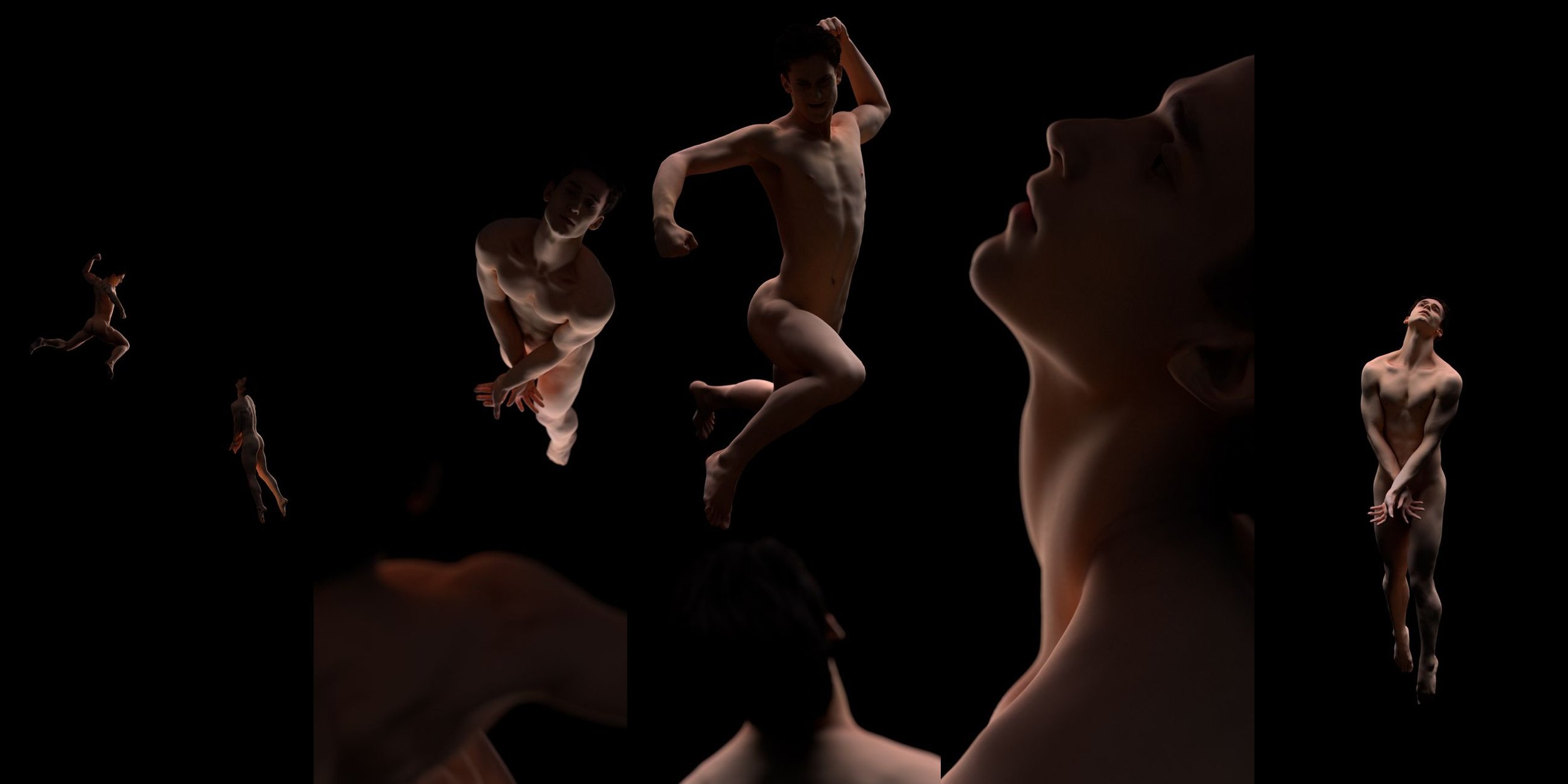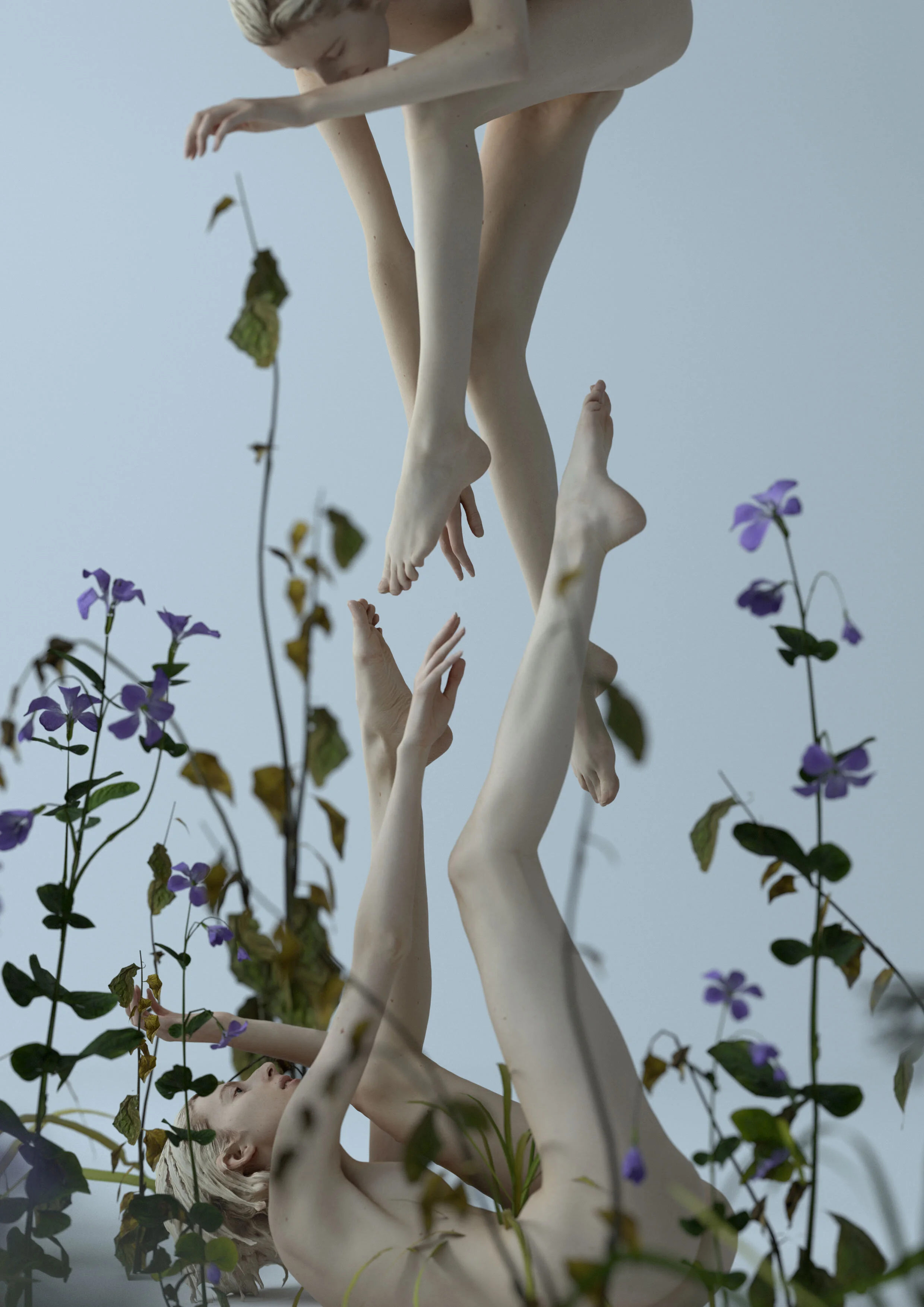FULL-BODY, HEAD & OBJECT SCANNING
Introducing the Splice Boy’s Multi-Camera photogrammetry, a Bespoke 3D Scanning for Digital Doubles, Avatars, VP & Game Assets & Many Artistic pursuits. We also offer traditional photogrammetry services.
167 CAMERA ARRAY
Cross Polarised System for minimized reflections.
24 & 50 Megapixel RAW Capture.
Instant Preview / Reject mode - Multi-Display Out.
14 Light Sources
VFX Reference data, Chrome/Matt Spheres, Colour Profiled.
We offer a complete and precise 3D poly asset acquisition, for creating photo-real humans, face, and prop scans. Our state-of-the-art photogrammetry rig, uses a 165-camera array and integrated cross-polarized lighting, to capture high-fidelity body scans and FACS blend-shapes (Facial Action coding systems).
Australia’s Finest & Largest CYBER SCANNER.
Volumetric Image Capture
The new world is virtual and an endless range of immersive experiential concepts is possible.
We provide accurate 3D modeling for:
virtual reality, augmented reality, holography, gaming, animation, 3D visual effects, photography, and computer-mediated reality.
Our volumetric capture system is the fastest, most detailed, and cost-effective method for developing the raw data needed for building 3D assets.
Multiple facial expressions known as FACS blend-shapes can be captured for the creation of incredibly realistic digital performances.
Whether you are working on a virtual talent for a TVC, a character in a feature film, props for an augmented reality app, a holographic host for an event, a virtual dancer, a Barbarian warrior or you simply want to create an avatar, we can make it happen.
Fully realized digital artwork with 3D lighting and set.
THE PROCESS
You bring the superstar talent, wardrobe, costumes, art, or Dwarvish axe. We will deliver the perfect image.
From freestyle creative movement to pipeline-specific data capture, the talent’s performance can be as sophisticated or as simple as you like.
Once on set, we capture 167 raw images, then preview a scan and run image sets through software to ensure correct alignment.
The system is flexible and intuitive which allows directors and VFX supervisors to be involved in every aspect of the capture process. We provide onset shot review via our interactive, touch-screen kiosk system, allowing you to review each shot quickly. The system is also incredibly fast which allows high volume shooting and multiple takes for detailed work.
Our extreme bandwidth ISP means you will be able to watch and direct everything that is happening from your remote location and receive all files as they are created. We also have a witness camera available so you can interact with talent on set in real-time.
We pride ourselves on making remote work as effortless and seamless as if you were on-site.
We can work with you in every aspect of the production, from casting, to styling, performance, and beyond. We have a huge network of collaborators and creatives ready to bring your vision to life.
SERVICES
Our 3D scanning array is designed to meet the needs of clients looking for the absolute best in volumetric capture.
Delivering everything from the raw files to a fully developed 3D asset to your specifications.
FACS blend-shapes.
3D object processing, Reality Capture.
Digital Asset Management.
Line-Production service
Casting, styling, HMU, Directing.
Remote capture via streaming available on request
End-to-End pipeline for 3d production via our network of collaborators and artists.
ON SET PREVIEW
Cross Polarized Lighting
PROJECT:
Carl Cox & Sensorium Galaxy Virtual Avatar
Splice Boys teamed up with Electric Lens Co. & Winifred.
Creating a Cutting-edge Virtual Avatar of Carl Cox for Sensorium Galaxy.The veteran producer has effectively been immortalized in the metaverse with the help of Sensorium Galaxy. Ahead of its launch later this year, the cutting-edge VR platform has been aggressively courting dance music's finest producers, signing them to residencies within their digital concert platform.
Ahead of his debut at the PRISM metaverse venue, Cox has been in Melbourne working with the team to help create his virtual avatar. In a new behind-the-scenes video, the fabled techno producer and DJ shares his insights on the exciting new technology and his impressions on how this venture will reshape the live music experience.
“Carl Cox had high praise for Sensorium Galaxy after working with developers to craft his virtual avatar.”
Cox describes the product as something "beyond the expectations of what you would experience inside such a virtual reality space." In the clip, we see him calibrating his movements for a performance environment and working with developers to achieve a hyper-realistic image and likeness for his avatar.
[ EDM Article CLICK HERE]



THE RIG
This is Australia’s best photogrammetry system delivering the highest quality 3D scans available in the region.
The rig uses 167 cameras, with a cross-polarized lighting array, operated by a sophisticated, custom-designed software system developed over years of research in high-end 3D scanning applications. It’s the biggest and best in the southern hemisphere capable of outputting photo-realistic virtual humans.
THE TEAM
Tom and Richard have decades of hands-on experience in multi-camera array operations from setup all the way through to post. That wealth of experience means they’re solutions-focused, client-friendly, creative, collaborative, and ready to make your project come to life.
Most important of all, they love what they do. The Splice Boys are ready to help you explore the possibilities in a way that will deliver the results you’re after and open up a huge range of possibilities and applications you hadn’t even thought of.
POST PRODUCTION WORKFLOW
Creating a digital human from a volumetric capture array typically involves several stages of post-production work.
Here is an overview of the general workflow:
Data acquisition: The first step is to capture volumetric data of the human subject using a volumetric capture array. This can involve using cameras and sensors to capture data from multiple angles simultaneously.
Data processing: The raw data from the capture array needs to be processed to generate a three-dimensional representation of the human subject. This typically involves aligning the data, removing noise, and creating a mesh that can be used to create a digital model.
Model creation: Once the volumetric data has been processed, the next step is to create a 3D model of the human subject. This can be done using a range of software tools, such as Autodesk Maya or ZBrush. The model needs to be detailed and realistic, with accurate proportions and textures.
Rigging: This involves adding a digital skeleton to the model, which can be used to animate it. This is typically done using software such as Houdini or Cinema 4D, which offers a range of procedural rigging options, as well as features for creating custom deformation systems and controlling complex simulations.
Texturing: The 3D model needs to be textured to give it a realistic appearance. This involves adding color, shading, and other visual effects to the model's surface. Software such as Substance Painter, Photoshop or Cinema 4D can be used for this stage.
UV Mapping: Before adding textures, the model needs to be "unwrapped" into a 2D space to create a UV map. A UV map is a 2D representation of the 3D model that allows the artist to apply textures accurately to its surface.
Once the UV map is created, the artist can start adding materials to the model's surface, Materials can include textures, such as images or procedural patterns, as well as other properties, such as specular highlights or bump maps.
Digital Hair: To create digital hair for a model, an artist would typically define the hair shape with guides, create a hair material for texture, define hair dynamics for movement, groom the hair to add details, and render the final output.
Animation: The final stage is to animate the digital human. This can involve creating realistic movements and expressions, such as walking, talking, and facial expressions. This stage is typically done using software such as Maya, Cinema 4D or Blender.
Motion capture data can be used with various software to record real-life movements and apply them to a digital human.
Overall, the post-production workflow for creating a digital human from a volumetric capture array is a complex and time-consuming process that requires expertise in a range of software tools and techniques. It is often undertaken by a team of specialists with expertise in 3D modeling, rigging, texturing, and animation.








